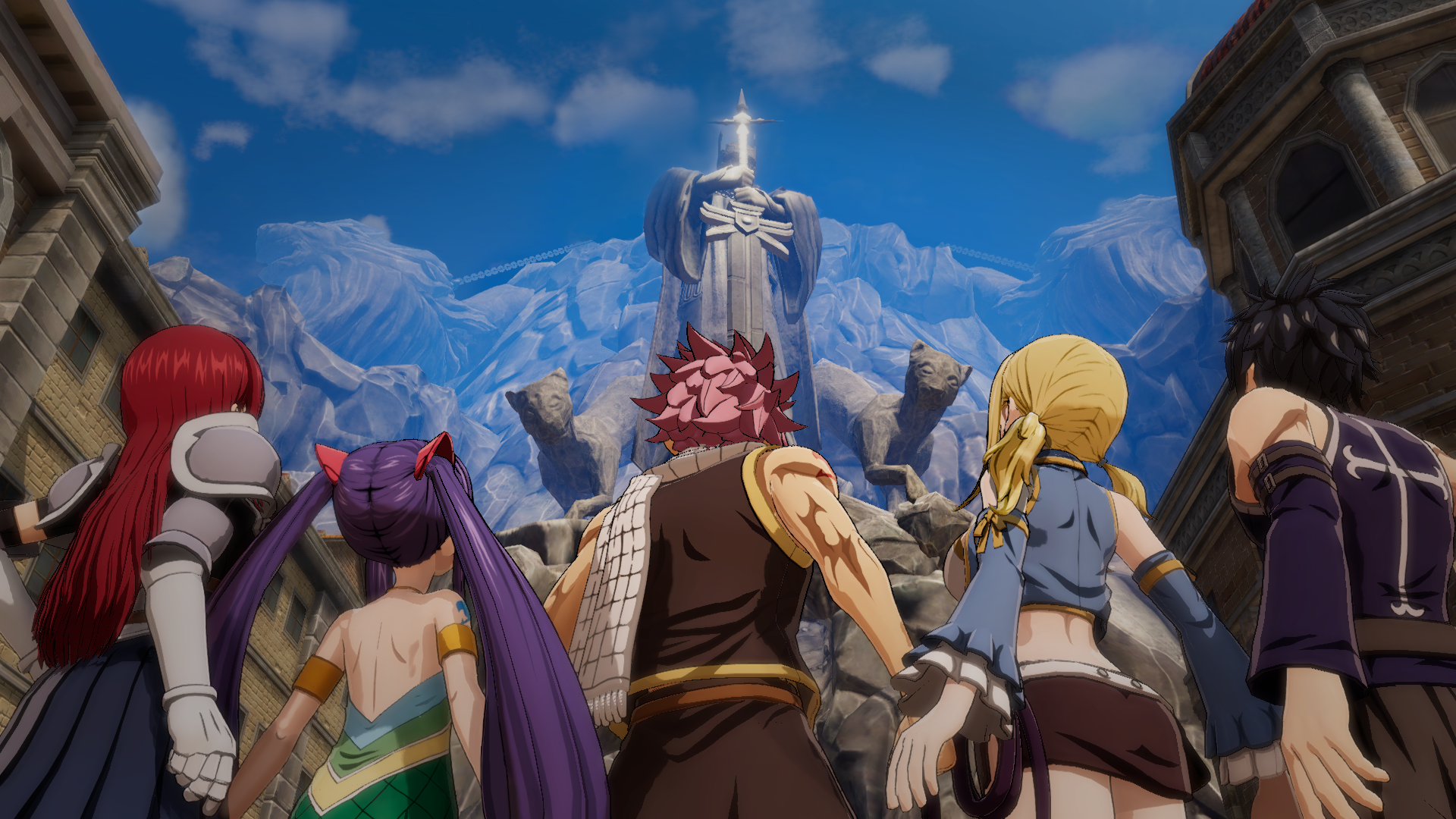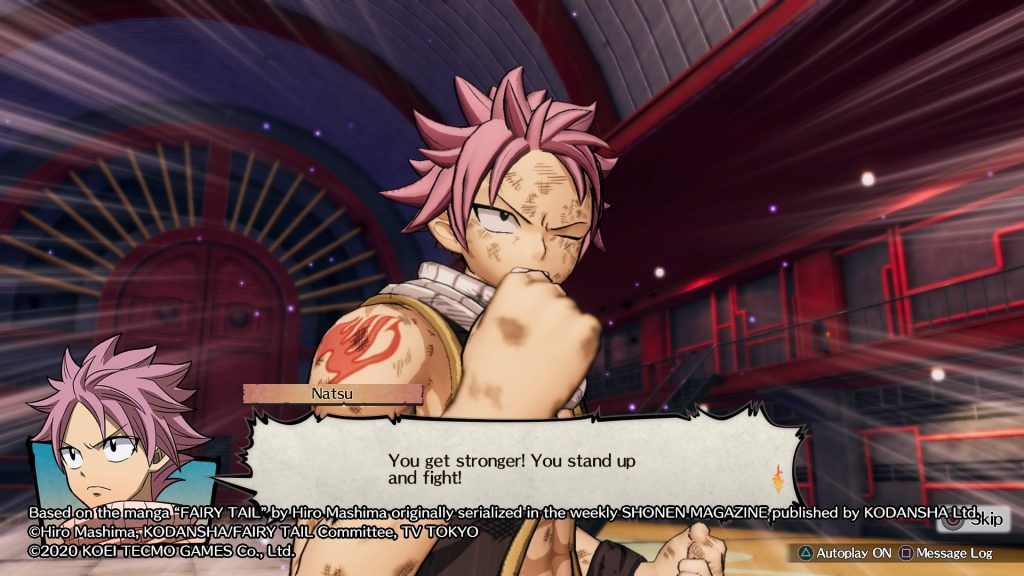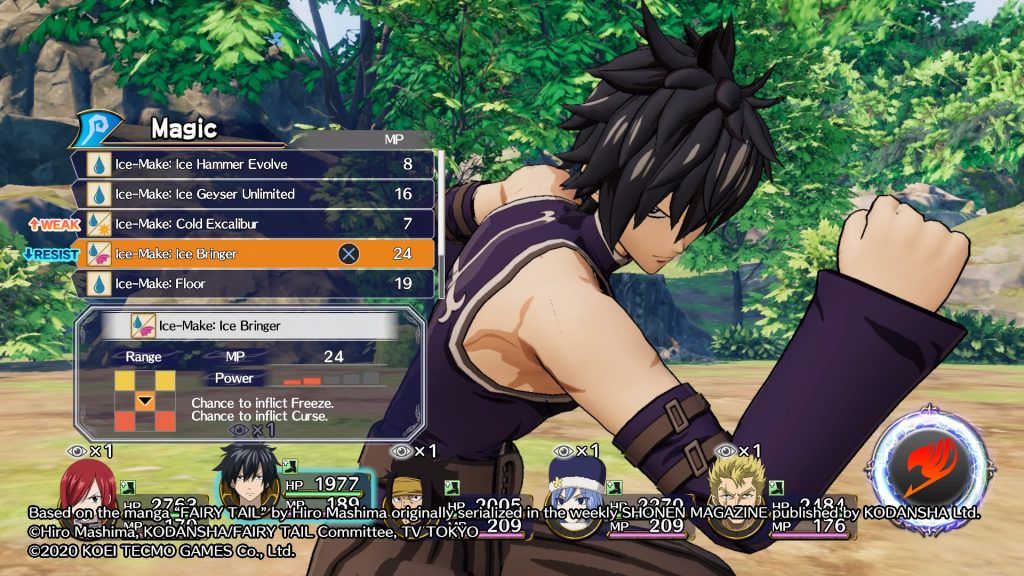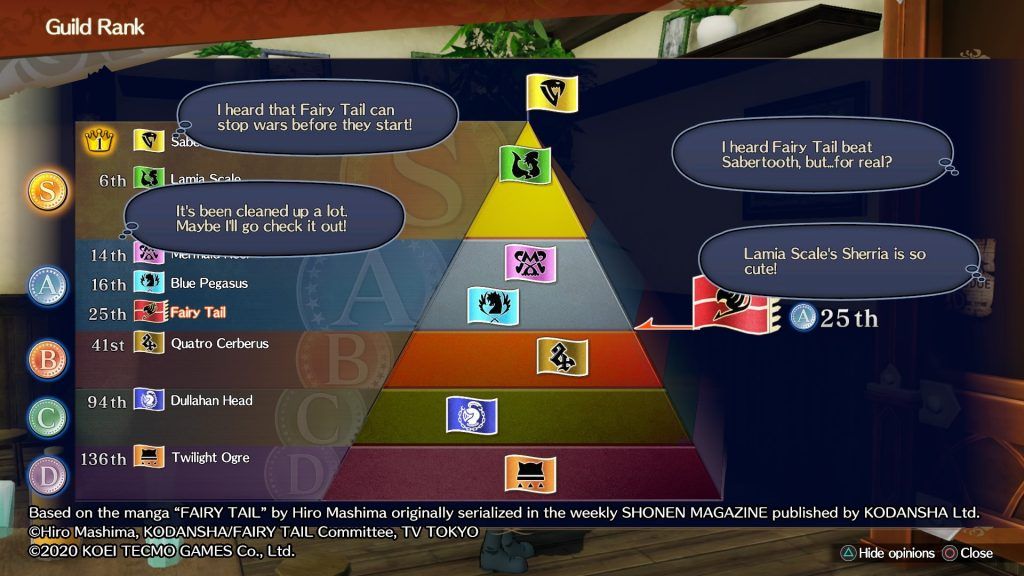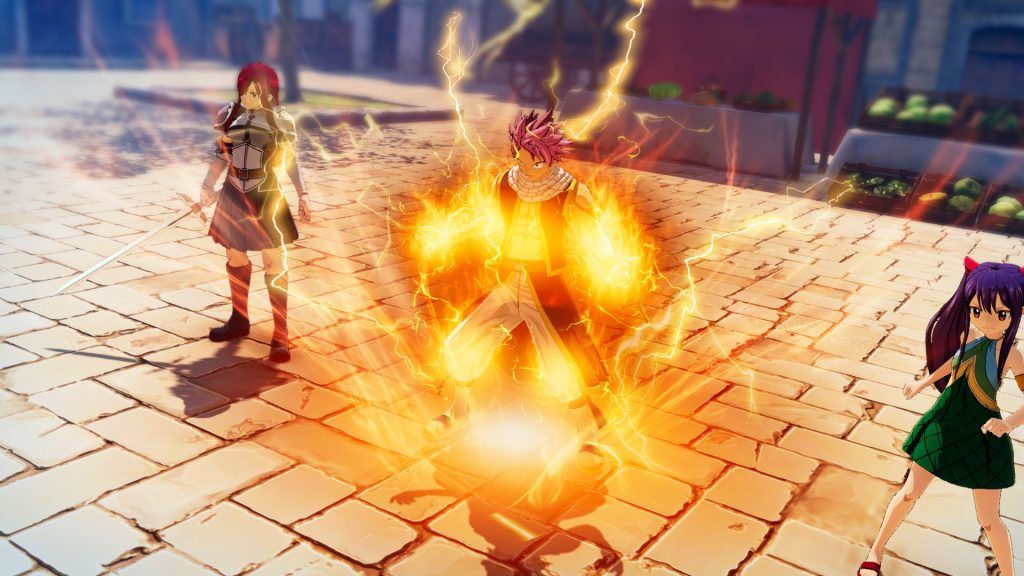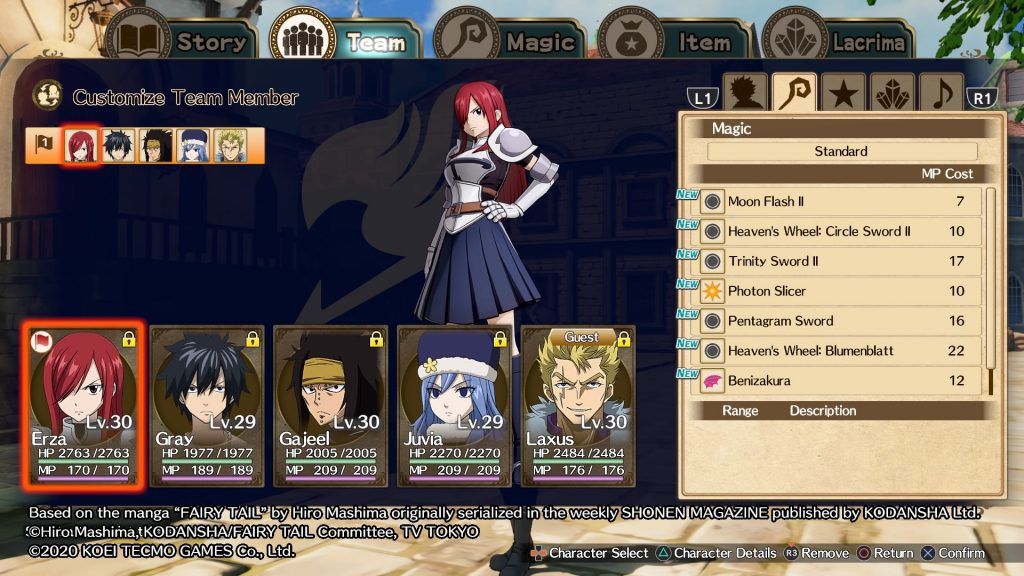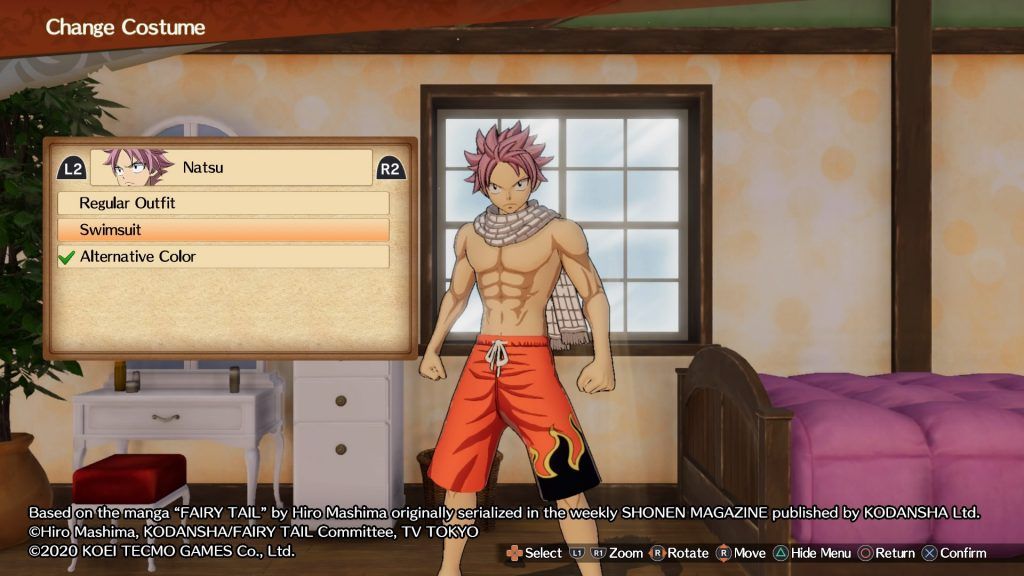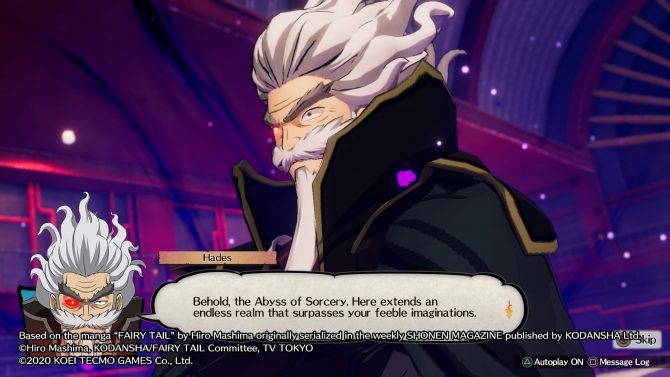Fairy Tail is a long-running manga and anime series. It was one of the bigger shonen series at the height of its popularity, running concurrently to the “Big Three” (Naruto, Bleach, and One Piece). It has since concluded a few years ago, but it made enough of a splash for Gust to develop an RPG based on it, so here we are.
I’ll preface this review by saying that my knowledge of the source material is very limited. I’ve only seen a few episodes of the Fairy Tail anime and have read none of the manga. This kind of game project is usually catered more to fans, so I am not the target demographic; this I freely admit. Much of the specifics of story arcs and character dynamics are lost on me here, relying entirely on the game and a little extra research to fill me in past the first half-dozen anime episodes.
Still, I am a fan of Gust’s Atelier series, having played through most of the English releases in the franchise. Between that and the trailers looking promising, I raised my hand for this review. Given that it’s possible to get enjoyment out of the Sword Art Online games without prior knowledge, for example, I’d been hoping for a similar feeling here.
Alas, that was not the sentiment I got out of the Fairy Tail game. This is a game for fans of the series, which is great! Unfortunately, it really didn’t do much to convince me to want to become a fan, either. What few glimpses of interesting concepts, characters, and stories the game has are largely undone by painfully mediocre gameplay and presentation. There’s nothing here that hasn’t been done by other JRPGs before, and usually much better.
[pullquote]"There’s nothing here that hasn’t been done by other JRPGs before, and usually much better."[/pullquote]
Fairy Tail opens at the end of the Tenrou Island arc, starting immediately with a tutorial boss fight against Hades. The events here play out quickly, offering both rapid-fire introductions to characters and gameplay mechanics. This arc ends with the titular Fairy Tail guild sealing themselves and Tenrou Island in a protective bubble, narrowly avoiding death from the dragon Acnologia.
When the bubble goes down, the reason for this rushed opening becomes apparent: while not much time passed inside the shield, seven years passed for the rest of the world. Fairy Tail had been the top-rated wizard guild prior to this moment, but now they’ve largely been forgotten and left destitute. Now, both the characters and the player have an excuse to build everything back up from the very bottom. Clever!
The rushed tutorial now takes its time to establish a few things and get you into the rhythm of the game. Fairy Tail also includes an encyclopedia to refer to, with short page-long descriptions of the story thus far. It’ll be filled with background on characters, terminology, and systems to check back on as the game unfolds. A welcome inclusion, though it naturally cannot fill in all the details and nuance of the full manga/anime series thus far.
As a wizard guild, Fairy Tail is tasked with numerous requests by the populace. These become the quests that you’ll spend the bulk of your time doing. Some are just repeatable and generic “go to X region and kill/find Y” quests; others are more designed, require specific members to be present, and feature dialogue and cutscenes involving them.
Gameplay will fall into the rhythm of taking a task from the guild’s request board, seeing a brief scene talking about it, then going off to find an item or have a battle. See a brief wrap-up scene, return, cash in, and repeat. Doing so will increase your money and renown, which serves both as a currency to improve both your characters and guild facilities. Renown will also see your guild rank increase over time, with higher ranks granting access to new areas and more requests.
Concurrently to this runs the main story. Having to restart from the bottom, the Fairy Tail guild decides that the best way to reclaim their notoriety is to win the upcoming Grand Magic Games. As such, the story quests will see you training and preparing for this, before taking part (and beyond). Almost all of these main story scenarios involve battles, so this leads me to the combat system.
Fairy Tail is a turn-based JRPG. You’ll have a decently sized ensemble of characters that you can bring into your team, each with unique abilities. The initial five from the tutorial consist of Natsu, Lucy, Gray, Erza and Wendy; after the tutorial, you’ll only be able to field up to three, expanding back up to five as it progresses. More characters like Juvia and Gajeel will join as story beats continue.
Since every character is a wizard, there are a few light twists on an otherwise standard JRPG formula. Both your health point and mana point bars become crucial, as running out of either sees your character knocked out. Basic Attacks are incredibly weak and still cost a single MP to use, so you’re encouraged to predominantly use your magic.
The most interesting aspect of the battle system is the enemy grid. Each enemy will be placed on a 3x3 grid. Your characters aren’t on the field, but their abilities each have specific ranges and areas that they can affect. Oft-times, your list of magic won’t do that much more damage than your basic one tile ability, but instead, have added effects and can hit additional tiles. A few abilities can reposition enemies on the grid to make subsequent AoE strikes hit harder, and enemies can also occasionally move themselves around. It ultimately becomes a case of judging whether to use MP to clear the field or just conserve it and focus fire. It’s not Radiant Historia levels of battlefield manipulation, but it’s something!
[pullquote]"You’ll have a decently sized ensemble of characters that you can bring into your team, each with unique abilities."[/pullquote]
You’ll also have a party gauge that allows you to trigger a Magic Chain when full. This lets you have your party members attack one after the other for less MP before ending on a massive finisher. These chains can get pretty ridiculous, and I knocked out whole boss phases in a single one on many occasions. Most of your upgrades serve to increase the power of these chains, and increasing character bonds by using them in requests together further increases their duration.
There are other considerations to the battles, such as characters being able to trigger Awakening after taking enough damage. This grants brief stat bonuses and potentially new forms and moves. You can also expend Awakening to avoid an incoming attack, or follow up an ally’s attack with another. There are definitely many options in the battles, and they’re probably the most well-developed part of Fairy Tail.
Here’s the problem, then: Fairy Tail is way too easy. Playing on normal difficulty, I was very quickly reaching points where I was breezing through even bosses without challenge. You have the tools and power to dispatch enemies so effortlessly that Fairy Tail just becomes trivial to play. This problem only gets worse if you decide to actually engage with more of the side content, as doing the extra requests or exploring zones fully will see you overleveled in no time.
Since this is where the bulk of unique character interactions and dialogue happens, fans will want to engage with it, thus turning the game into a cakewalk. Worse still, the main story will frequently set points where you have to reach a certain level or guild rank to advance. The option to power through it is removed, thus throwing the gameplay balance out the window. Any attempt to dig into the battle system or really utilise party strengths just becomes pointless when you can breeze through everything.
[pullquote]"You have the tools and power to dispatch enemies so effortlessly that Fairy Tail just becomes trivial to play."[/pullquote]
The ease of battles also has run off effects into other systems. In addition to your guild requests, you can upgrade Fairy Tail’s guild facilities through finding materials in the world. These give all sorts of bonuses, but it all amounts to making you stronger, so it’s easier once again. Mixing and matching your party members to increase their bonds for added dialogue? Also increases their power. Side quests and exploration will award equippable Lacrima gems, and you can even craft powerful character-specific ones. These are all the most generic stat increases you can imagine, and it makes the game easier still. Everything loops back into making my time with the game an exercise in patience as I steamroll all obstacles, rather than enjoying the systems.
Still, I’ve played through worse gameplay systems for the sake of a good story. So once again, I was disappointed to not really find that here. That isn’t even the fault of it being a Fairy Tail adaptation, either; there was honestly quite a lot to like, but the sheer breakneck pace of the game means everything happened super fast and then was gone a moment later.
Everything is rushed through, and usually not for any reason beyond budget. There will be multiple scenes in which interesting events are described in a couple of text boxes and a still image, only to thrust you back into mundane requests. Numerous characters and even major antagonists will be talking, but only have a portrait rather than a character model. So effectively, you’re left watching your party have dialogues with people off-screen.
Those limitations didn’t stop them from having a fully animated cutscene of the female Fairy Tail members at a swim party, though. Gust has its priorities, it would seem!
In fairness, those priorities carried over to the stylised character models and attack animations; those are very on-brand for the original designs. The rest of the presentation isn't really better though, with most environments being incredibly bland. Fairy Tail's world consists of stock biomes, generic enemy creatures, and only a few series-specific inclusions. All the omissions and lack of polish seriously added up. No effort was put into the game's performance, either. Despite the fairly bland visuals, the frame rate is absurdly low and dips into comical territories during flashier attacks and bigger zones.
[pullquote]"These good moments were very quickly hamstrung by more rushed scenes, easy battles, and cheap presentation."[/pullquote]
I did want to like Fairy Tail, and there were points where character and charm shone through. But these good moments were very quickly hamstrung by more rushed scenes, easy battles, and cheap presentation. The end result is a lot of fine ideas executed in cheap, mediocre ways that hamper their enjoyment. It’s a perfectly serviceable but completely uninspired JRPG. There’s nothing here that hasn’t been done so much better. I can't help but feel that Gust made all the basics of an Atelier game, only to entirely remove the intricate crafting systems and presentation that typically carry the series. Slap a Fairy Tail skin on it, and here we are.
Fairy Tail was a game made for existing fans of the series, through and through. It offers very little to actually entice me to become a fan or learn more about the source material. I can absolutely respect that the game isn’t for me; even so, I couldn’t help but feel that dedicated fans of the series deserve a much better attempt than this. It checks all the boxes and reminds players of the highlights and character moments of the greater series, but only puts in the barest effort doing so.
That might be enough for you, but I think fans should have better. As for those who aren’t fans, it’s probably better to skip Fairy Tail. Even hardcore JRPG fans will find it not worth playing instead of something much better. This is just too mediocre to recommend for all but the most dedicated fan. Still, I hope you find what you're looking for here if you do take the plunge.
Fairy Tail
- Platform(s)
- Switch, PS4, PC
- Developer(s)
- Gust
- Publisher(s)
- Koei Tecmo
- Genre(s)
- JRPG

